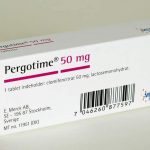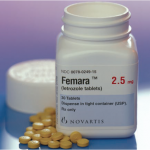Omifin 50mg: Uses, How to Take It, Side effects, Price

What is Omifin and how is it used?
Omifin is a brand of clomiphene citrate, a prescription medication used to treat the symptoms of infertility in women who have ovulatory failure. Omifin may be used alone or with other medications.
Omifin is often prescribed to women with polycystic ovary syndrome, or PCOS, which is a syndrome that can cause irregular or absent ovulation. However, not everyone will respond to this medication. Women with primary ovarian insufficiency, or early menopause, and women with absent ovulation due to low body weight or hypothalamic amenorrhea are most likely to not ovulate when taking Omifin. Women with these conditions may need more intensive infertility treatment.
How Does Omifin Work for Fertility?
Omifin belongs to a class of drugs called Selective Estrogen Receptor Modulators. Omifin works by making the body think that your estrogen levels are lower than they are, which causes the pituitary gland to increase secretion of follicle-stimulating hormone, or FSH, and luteinizing hormone, or LH. Higher levels of FSH stimulate the ovary to produce an egg follicle, or multiple follicles, that will develop and be released during ovulation. High levels of LH stimulate ovulation.
Omifin is often prescribed by primary care physicians or OB-GYNs before they refer a couple to see a fertility specialist for more specialized care. Some reproductive specialists prescribe Omifin as well
How to take Omifin 50 mg
Omifin is a 50-milligram pill that is usually taken for five days in a row at the beginning of a woman’s menstrual cycle. Day three, four, or five is typical for an Omifin start date.
Doctors will usually prescribe one, two, three, or sometimes four pills to be taken at the same time each day, depending on how they think you will respond to the medicine. It’s common to start at the lowest dose and increase each month as needed.
Some doctors will want you to come back for blood work to measure hormone levels or a transvaginal ultrasound to look at your ovarian follicles. This information can help them determine when you should begin having intercourse or have intrauterine insemination. It can also help them determine the appropriate dose for your next cycle.
Most doctors don’t recommend that you use Omifin for more than three to six cycles, due to the decreasing pregnancy rate that occurs with continued use. Your doctor may extend this if it takes a few cycles before they find the dose that works for you.
What are the possible side effects of Omifin?
Omifin may cause serious side effects including:
• stomach pain,
• bloating,
• nausea,
• vomiting,
• diarrhea,
• rapid weight gain (especially in your face and midsection),
• little or no urination,
• pain when you breathe,
• rapid heart rate, and
• shortness of breath
Get medical help right away, if you have any of the symptoms listed above.
The most common side effects of Omifin include:
• flushing (warmth, redness, or tingly feeling),
• nausea,
• vomiting,
• bloating,
• breast pain or tenderness,
• headache, and
• breakthrough bleeding or spotting
Tell the doctor if you have any side effect that bothers you or that does not go away.
These are not all the possible side effects of Omifin. For more information, ask your doctor or pharmacist.
Call your doctor for medical advice about side effects. You may report side effects to FDA at 1-800-FDA-1088.
Does Omifin interact with my other drugs?
A total of 2 drugs are known to interact with Omifin, they include;
- bexarotene
- ospemifene
However, there are 5 disease interactions with clomiphene which include:
- abnormal uterine bleeding
- hepatic dysfunction
- pituitary activity
- uncontrolled adrenal dysfunction
- hyperlipidemia
Are there any alternatives to Omifin?
Yes, there are other oral medications that can stimulate the ovaries by the gonadotropin-releasing effect. Some of them are Letrozole and Tamoxifen. They can be utilized instead of Omifin. In fact, Letrozole has replaced Omifin as the first-line agent for ovulation induction in PCOS patients due to better success rates. A more potent alternative is injectable fertility drugs, typically used in IVF.
Can Omifin be used for male infertility?
Omifin can be used for male infertility. The dose is typically 25-50 mg per day and requires close monitoring of FSH, LH, Testosterone. It can be combined with HCG or used alone. It is vital to avoid hyperstimulation of the testicles, and you need an experienced fertility urologist or fertility specialist for a consultation.
How much does Omifin cost?
The average price of Omifin 50mg is around $0.8 per tablet or $24 for a pack of 30 tablets depending on the pharmacy you visit. Prices are for cash-paying customers only and are not valid with insurance plans.





